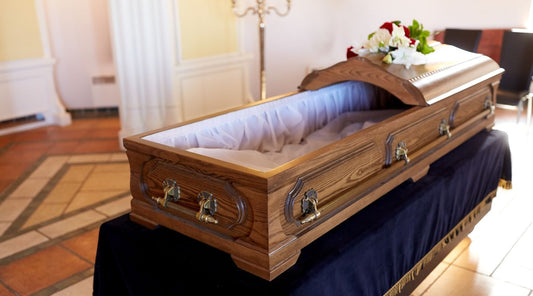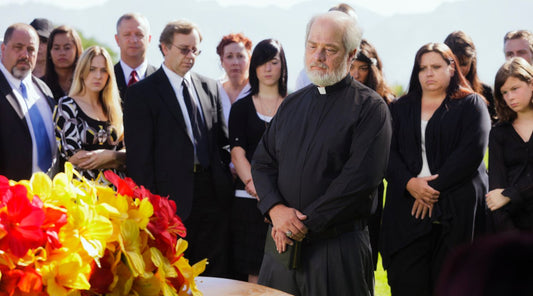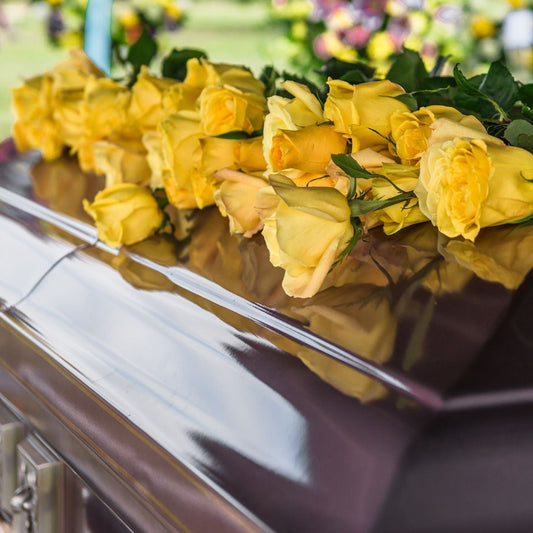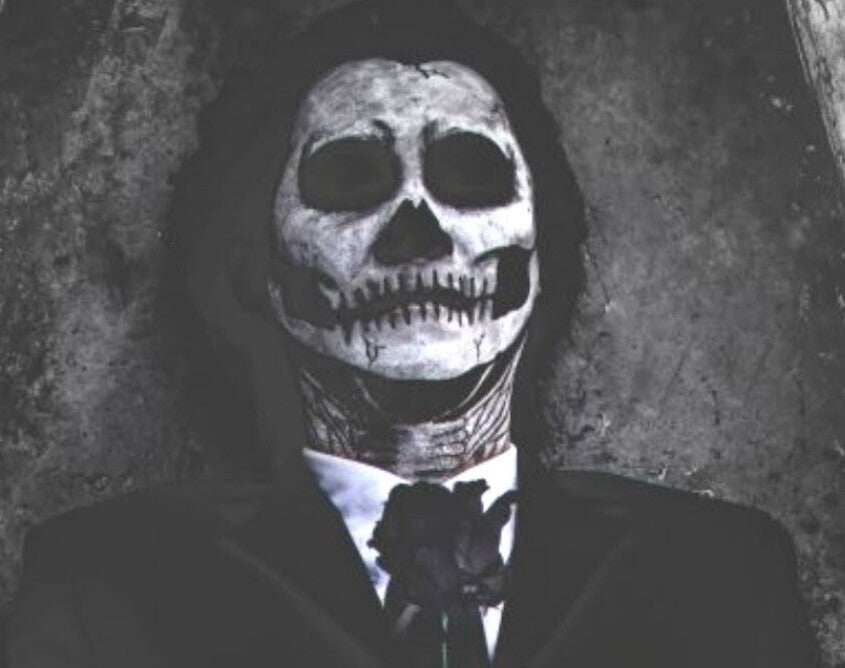
What happens with the body in a casket after 2 months and after 10 years?
Death is an irreversible cessation where you finally reside after your life on earth. We know that cremation or burial will be our last destiny but do you know how our body reaches the final destination or what comes after death?
Many of us might find this topic subjective, but understanding the last rites at our local funeral homes has always intrigued everyone at some point.
What happens to the dead body during embalming? What happens when the body begins the decomposition process? What does a dead body look like if you open casket after 10 years?
This article will run you through the different stages of the human body after death and what you can expect if you open a buried casket after 10 years.
What comes after death?

Death declaration
When someone dies, doctors must certify and issue a death certificate. The process is immediate and done within a reasonable time. But that is only if the doctor knows the cause of the death or has been in contact with the patient.
However, if the patient is not in contact with the doctors, the coroner may request a post-mortem before providing the death certificate. In case there is an active criminal investigation ongoing, a forensic pathologist conducts the post-mortem.
Post mortem
As mentioned earlier, a coroner can request a post-mortem if the cause of death is unknown. A recently deceased person will be taken to the coroner for a post-mortem which involves two parts, external and internal examination.
The external examination involves examining the deceased person for external injuries or other medical interventions. On the other hand, internal examination involves incision and removing organs for detailed observations.
If doctors fail to detect the cause of death with their naked eyes, they will take fluid or tissue samples for toxicological examination.
Death documentation
If a patient has a history with the hospital, issuing a death certificate is a straightforward process. However, if the doctors have no history of the patient, a post-mortem is the preferred process.
Furthermore, post-mortem also unravels whether alcohol or drugs are in play or if the patient has other health issues. Once doctors finish the post-mortem, they clean the patient and issue the death documentation.
Mortuary
After issuing the death certificate, doctors shift the dead body to the mortuary with utmost care. Heavy lifting is not an option while shifting the deceased person, as hospitals use stretchers to maintain safety regulations.
Furthermore, untreated bodies at room temperature will deteriorate, so hospitals put them in refrigerated units until the documentation is complete.

Embalming
Embalming is the preservation process where an embalmer cleans the body with disinfectant or formaldehyde spray. The process is crucial as it helps the body attain its appearance even after injecting the cavity fluid to preserve the body as long as possible. Most bodies go through this process before burial.
However, the cleaning process may differ if the deceased belongs to a Muslim, Sikh, or Hindu family.
Funeral service/wake/memorial
Once a hospital clears a body for burial or cremation, the cemetery operations manager or crematorium technician follows the funeral according to the regulations.
Religious offerings, prayers, and memorials will follow as per the family's requests. The funeral director is responsible for taking care of all these once the body reaches the funeral home.
Burial or cremation
Cremation or burial happens according to religious traditions with all the rituals. If the deceased belongs to the Hindu community, a crematorium technician ensures that everything goes according to the traditions.
On the other hand, Muslims and Christians purchase grave plots and follow the instructions of the cemetery operations manager to complete the burial process.
What happens to the dead body during embalming?

As mentioned earlier, embalming is a preservation process that helps the body stay put for extended periods. So what happens during embalming? Before embalming, an embalmer will remove the deceased from the refrigerated unit and clean the body with a disinfectant or formaldehyde spray.
Once done, the embalmer will massage the limbs to reduce the stiffness and close the eyes with a plastic cap or specialized glue. It may also include shaving if there is a requirement.
After relieving the stiffness, the embalmer secures the sewing and removes the blood from the surgical portions. The embalmer replaces the blood with specialized chemicals to complete the arterial embalming.
An embalmer also ensures that body cavities are embalmed through an incision using a surgical instrument, a trocar. This instrument helps the embalmer to fill body cavities with fluid and gas to retain the body's posture.
Furthermore, the embalmer injects formaldehyde-based chemicals into the body and completes the embalming process. After that, the dead body can be placed in a casket or back in a refrigerator, depending on how soon the funeral service is expected.
What happens when the body begins the decomposition process?
Our body undergoes various biological changes after death. Not only that, but it also produces foul-smelling gases, the smell you might associate a mortuary with.
The dead body's soft tissues decay with time, and the inner skeleton reveals its appearance. However, a skeleton can survive for centuries depending on various conditions.
As mentioned earlier, the remains of a body usually undergo various biological phases. But the skeletal remains remain unaffected by these processes until they eventually turn into fossils after decades. It only begins once the soft collagen inside the bones deteriorates, and the bones finally crack as the organic matter and organs decompose.
These stages include Hypostasis, Algor Mortis, Rigor Mortis, and Putrefaction. Furthermore, some dead bodies may undergo Adipocere and Mummification depending on specific environmental conditions.
However, Hypostasis, Algor Mortis, and Rigor Mortis often occur during the first 24 hours after death. For instance, Hypostasis may occur within a couple of hours after death as blood vessels collapse. The rest of the process may reveal white gaps, semen emission, and regurgitation in the body.
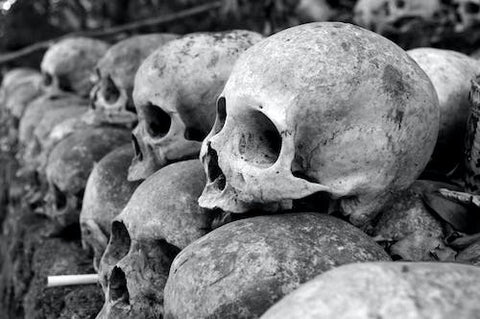
Algor and Rigor stages also occur within the first 24 hours when the body cools down and becomes stiff. However, after 36 hours, the body regains its softness due to various chemical bonds and stiffness breakdowns.
Putrefaction is the last phase, where a dead body loses its soft tissues. It begins with discolorations along the abdominal wall skin (also known as the 1st visible sign of putrefaction).
You can also witness slippage of the epidermis and superficial veins that leads to a distended abdomen. Furthermore, the dead body will depict signs of bloodstained fluid from orifices during the Putrefaction phase.
The decomposition process may also include Adipocere and Mummification if the body is under specific environmental conditions after being buried.
For instance, you can witness a soap-like substance or waxy decomposition from bacteria in the body. This phase is Adipocere, often occurring during the 3rd or 4th week after the deceased person has been buried in the earth. However, it may even take months for a body to enter the Adipocere phase.
Likewise, Mummification is a decomposition phase where a body decomposes due to wind or dehydration. The condition is often common in mummies found in the Egyptian context.
What happens with the body in casket after 2 months?

Dead bodies inside caskets undergo four stages, including active decay and skeletonization. For instance, a corpse will undergo self-digestion or Autolysis, which is the first decomposition phase. Enzymes develop in the body, which eats body cells. These enzymes also play a crucial role in the second stage (Bloating) which usually occurs after 3 to 5 days.
So what happens to the body in casket after 2 months? After bloating, it enters the 3rd phase, or 'Active Decay,' where organs liquefy. The body will lose mass, slowly revealing the skeleton.
If you open the casket of a non-embalmed body, it will be more decomposed than an embalmed body in a few months or years.
Open casket after 10 years what to expect?
A dead body begins the decomposition process in different phases. The first stage begins within the first 2 hours, when the body decomposes, starting with tissue damage. You may also witness foam in certain parts of the body.
After two weeks, the body starts to bloat and change its color to red after the blood present in the body starts to decompose. Once the corpse surpasses the fourth week, you can witness liquefaction in the rest of the remains. The teeth and nails also begin to fall during this time frame.
After 1 month, the corpse enters the fourth stage of decomposition, which may continue for decades.

Our body has over 200 bones and trillions of cells and microbes. So the decomposition may differ depending on the burial conditions. Wooden caskets are the most common caskets used for burial. However, the underground pressure can cause the coffin to be squished or distorted, making it difficult to open casket if you need to in a few years.
Answering the question of how does look like the body in casket after 5 years, there are four primary stages of decomposition, which may also include mummification due to environmental conditions. The third stage begins with mass loss and liquefaction, which slowly proceeds toward the fourth stage. You'll notice that the corpse starts losing its teeth from the mouth.
However, if you open a casket after 10 years, you might witness Adipocere, where the body undergoes a chemical reaction and releases a soap-like substance (grave wax). Grave wax is produced by decomposing body fat when the deceased has been in the casket for at least 10 years.
On the other hand, you may also witness mummification if the conditions are dry.
How long does a dead body stay in the funeral home after the funeral service?
Although most hospitals recommend conducting the funeral service at the earliest, you can keep the deceased for one to two weeks in the funeral home. However, you must complete additional tasks to preserve the dead body and arrange the funeral.
